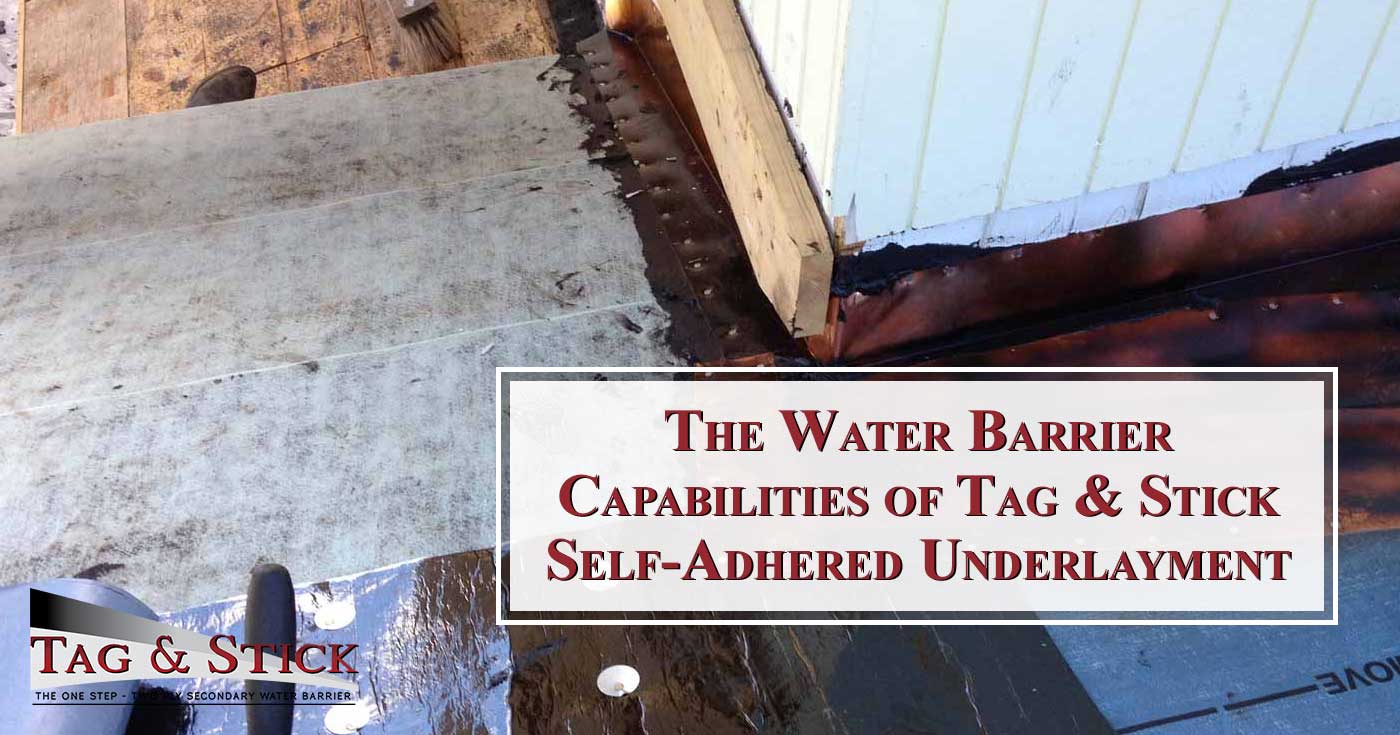The Water Barrier Capabilities of Tag & Stick Self-Adhered Underlayment

Self-Adhered Underlayments (Peel & Stick) has taken the roofing market by storm, mainly due to the numerous advantages it has shown to have over traditional hot-applied underlayments.
Disastrous natural events like Hurricanes Andrew, Irma, & Wilma proved to the roofing world that while traditional methods of underlayment have worked to protect roofing for everyday use, they’ve left a lot to be desired when it comes to these extreme weather conditions.
When it comes to protecting your home, roofers and homeowners want to know that the best quality materials are being used to secure their homes. That is why we have thought it best to compare the older felt paper methods with our new self-adhered underlayment technology.
Water Resistance Is Not A Water Barrier
Felt paper underlayment is a mixture of recycled paper, cardboard, and wood usually soaked in an asphalt mixture. The asphalt mixture guarantees a water-resistant surface that will allow run-off under the shingles if water penetration were to occur. This has been an effective strategy for most homes; however, it has proven to be less valuable under the intense heat and weather conditions that Florida endures yearly.
The materials that are used to make felt paper are naturally permeable, meaning they allow water vapor to soak through the underlayment over time. The heat a roof in South Florida must withstand could potentially be subject to a lot of water vapor and humidity as time passes. As a result, the felt paper is prone to wrinkling, tearing, and warping when exposed to the harsh moisture and heat exposure of the Florida environment.
A more effective water barrier now exists with the innovation of self-adhered underlayments. Tag & Stick LLC uses a fiberglass-reinforced SBS modified bitumen underlayment, with a woven fabric top-surface and self-adhering modified bitumen. These materials create a better water barrier by adding strength and reducing the effects of moisture which were the cause of failure in the felt paper.
The advantages of self-adhered underlayment begin with its installation. On a large commercial building where construction may have to be halted due to weather, our underlayment can withstand direct exposure to sun and water for 180 days. This protection becomes even more valuable during hurricane season when roof tiles break or crack and leave parts of the roof exposed. Now homeowners will not have to worry about immediately finding replacement tiles, especially when demand increases and it becomes difficult to cover all the roofs in an area at once.
More Than A Water Barrier
Our self-adhered underlayment does not absorb water the way felt underlayment does. For this reason, it creates an excellent water barrier against all types of moisture. Because it’s impermeable by water, the underlayment does not warp or disfigure, and will not tear. This makes it safer to work on for roofing contractors and means no tarps or felt will be flying around the neighborhood when it becomes windy.
The two-ply design of the underlayment, with its 115 mils thickness, is a sturdy solution to protecting a wide variety of roofing materials, from tile and shingles to metal, shakes, and slate. It’s wind-resistant, easier, safer to work with, and is removable IF a re-roofing will occur.
If you operate in Broward, Palm Beach, or Miami-Dade Counties and you want an effective waterproof solution to roofing underlayment, give Tag & Stick LLC a call today on 954-255-3107.